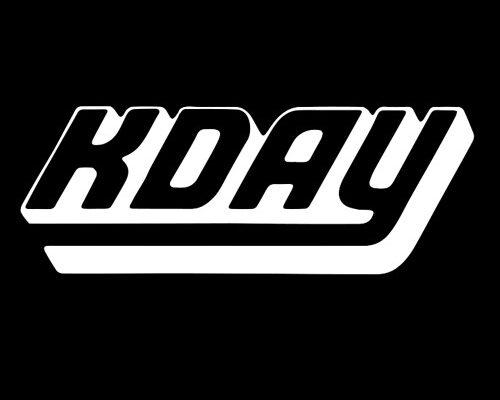The “Hit-Breakers”: Remembering KDAY in Summer ‘84
By Sean Ross
For many people, 1984 was the best summer of the best year for a resurgent CHR format. It was the
summer of Prince, “When Doves Cry”; Bruce Springsteen, “Dancing in the Dark”; Cyndi Lauper, “Time
After Time”; Ray Parker, Jr., “Ghostbusters”; Duran Duran, “The Reflex”; Tina Turner, “What’s Love Got
to Do With It”; Madonna, “Borderline”; ZZ Top, “Legs”; Huey Lewis & the News, “Heart of Rock & Roll.”
It was a high point for big mass-appeal hits by superstar artists, punctuated by an occasional left-fielder
such as “Dance Hall Days” or “Sister Christian.” That was the summer that Top 40 KIIS-FM Los Angeles
had a 10 share, while new stations nationwide copied WHTZ (Z100) New York.
But my favorite station that summer was a music AM, already a rarity by 1984. 1580 KDAY had been
phenomenally successful in the mid-‘70s. In 1983, new PD Jack Patterson and MD Greg Mack relaunched
it as a younger-leaning, almost all-current station, similar to what was happening in Top 40 at the time.
In 1984, L.A. had never had a full-signal R&B station on FM. It had KJLH and the mellower KACE on that
band, while heritage AM KGFJ competed with KDAY on AM. Everybody agreed that Urban radio on a full-
signal Los Angeles FM would be huge. If you knew about KDAY, you wished it was on FM.
KDAY is remembered now as the cradle of West Coast Rap. The station’s legend grew and continues now
on Classic Hip-Hop KDAY-FM. In 1984, it was just becoming Hip-Hop HQ. First, local DJs Uncle Jam’s
Army had hits. By summer ’84, the crew’s Egyptian Lover had a few more of his own. But compared to
the format nationally, and certainly anybody in the market, KDAY was the station that played the most
rap. At that moment, Run-D.M.C. (which was coming to L.A. to play a show presented by Uncle Jam’s
Army) was taking Hip-Hop in a harder direction, but that summer KDAY also played a new song by the
then-Disco 3, who finally renamed themselves after that song, “Fat Boys.”
In July ‘84, KDAY was capitalizing on the excitement about breakdancing hitting the movie screen in
“Beat Street” and “Breakin’.” (The :00 ID had a double meaning: “KDAY Santa Monica — and for all of Los
Angeles, we are the hit-breakers!”) There was a lot of music from that place where Hip-Hop (Twilight 22,
Herbie Hancock’s post-“Rockit” singles) and Arthur Baker-influenced dance (Nuance, Art of Noise) met
on the mat. But KDAY was also where you heard:
The most early-‘80s funk, still going strong as a genre at the time (Cameo, Zapp/Roger, One
Way, Bar-Kays, Rick James, Lakeside, Dazz Band);
Everything Prince/Time/Sheila E.-related, including the Prince B-sides that became legendary
unto themselves (“17 Days,” “Erotic City”), and the Jimmy Jam/Terry Lewis productions as their
star took off;
The new group of teen acts that had started to pop up in the wake of New Edition. In the
summer of ’84, that included Teddy Riley’s Kids at Work and even Menudo, whose first efforts
to have hits in English were taken seriously by few other radio stations;
There was even some of the poppy/jazzy early ‘80s R&B that laid the groundwork for Smooth
Jazz (Stanley Clarke, Peabo Bryson, even Johnny Mathis had a minor R&B hit that summer).
Over the course of the year, KDAY was up 1.0–1.3–1.6–1.7 12-plus, still behind KJLH’s 2.0 share, but
significant for an AM whose signal was sometimes more easily heard in Hawaii at night than parts of Los
Angeles.
When KPWR (Power 106) Los Angeles signed on in early 1986, it was instantly phenomenal. It wasn’t
KDAY on FM, though. Within its first months, Power began to play more of the Latin-flavored dance-pop
that had been heard in small doses on R&B radio. KDAY found its niche by continuing to follow the
growth of Hip-Hop, especially West Coast Hip-Hop. Later that year, it sponsored a “Peace Day”
broadcast that confirmed that KDAY had become more than a radio station.
It was when KDAY was sold and changed formats in 1991 that Power 106 finally became, essentially,
KDAY on FM, segueing to a more Hip-Hop/R&B approach (but still self-identifying as Rhythmic Top 40).
Most of the KDAY airchecks found online are mixes, but here are two brief airchecks of KDAY, from April
1984 and June 1984. I’ve also created a Spotify playlist of many of the songs, hits and otherwise, heard
on the station as spring turned into summer.
Sean Ross is the editor of the weekly Ross On Radio newsletter about music and programming trends and
history. Subscribe here. Or follow him @RossOnRadio.
1580 KDAY Los Angeles Summer 1984
